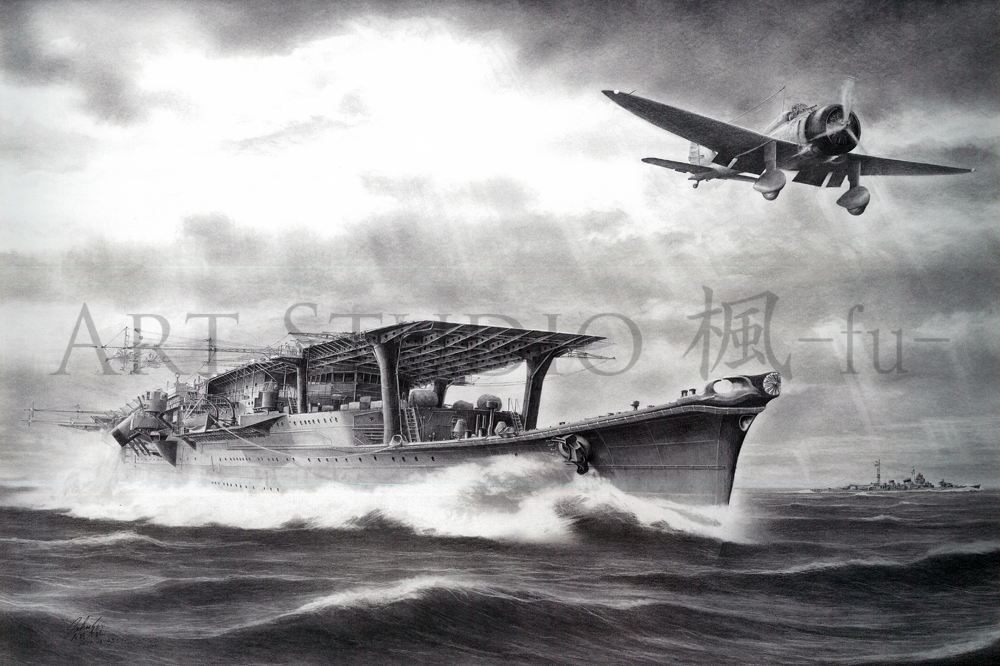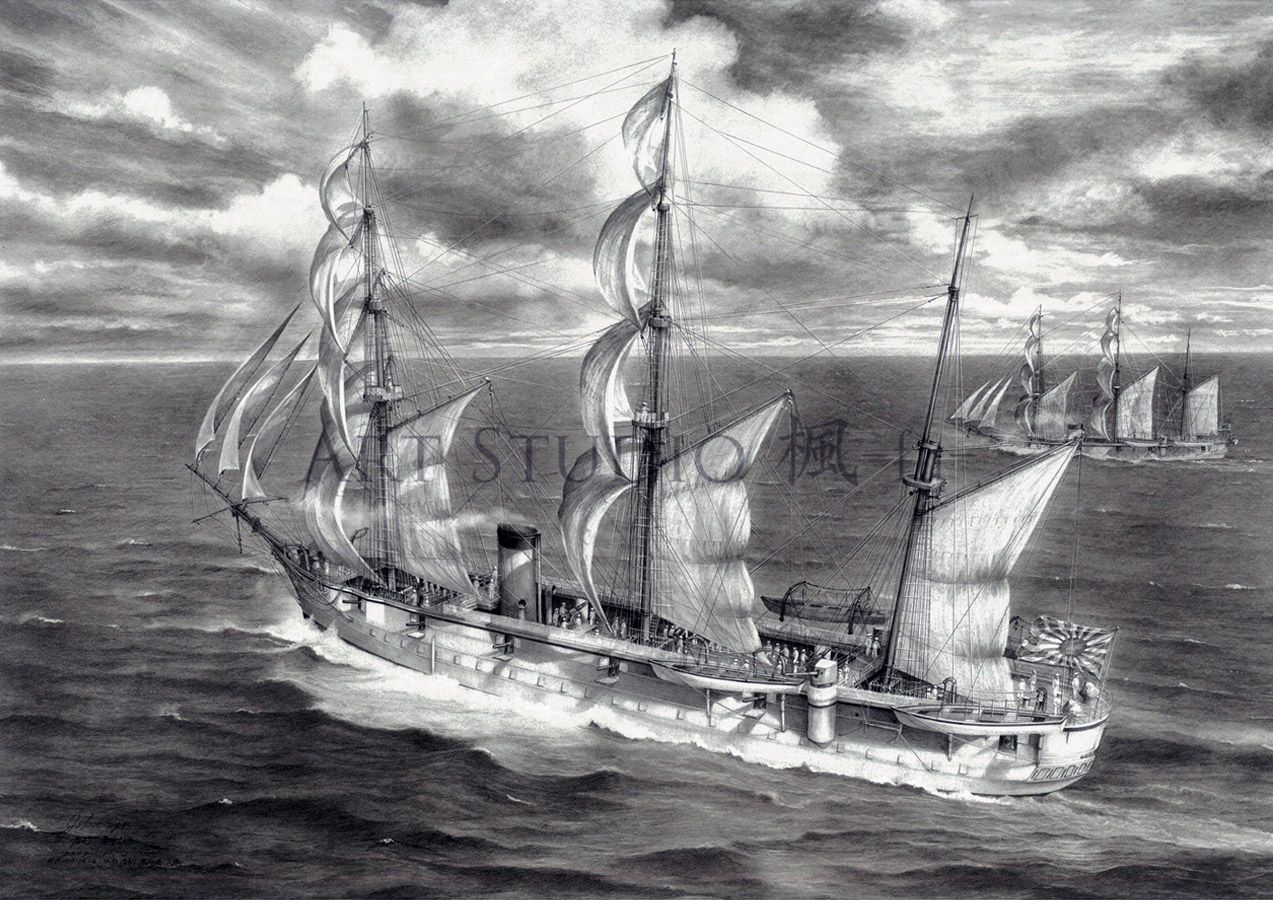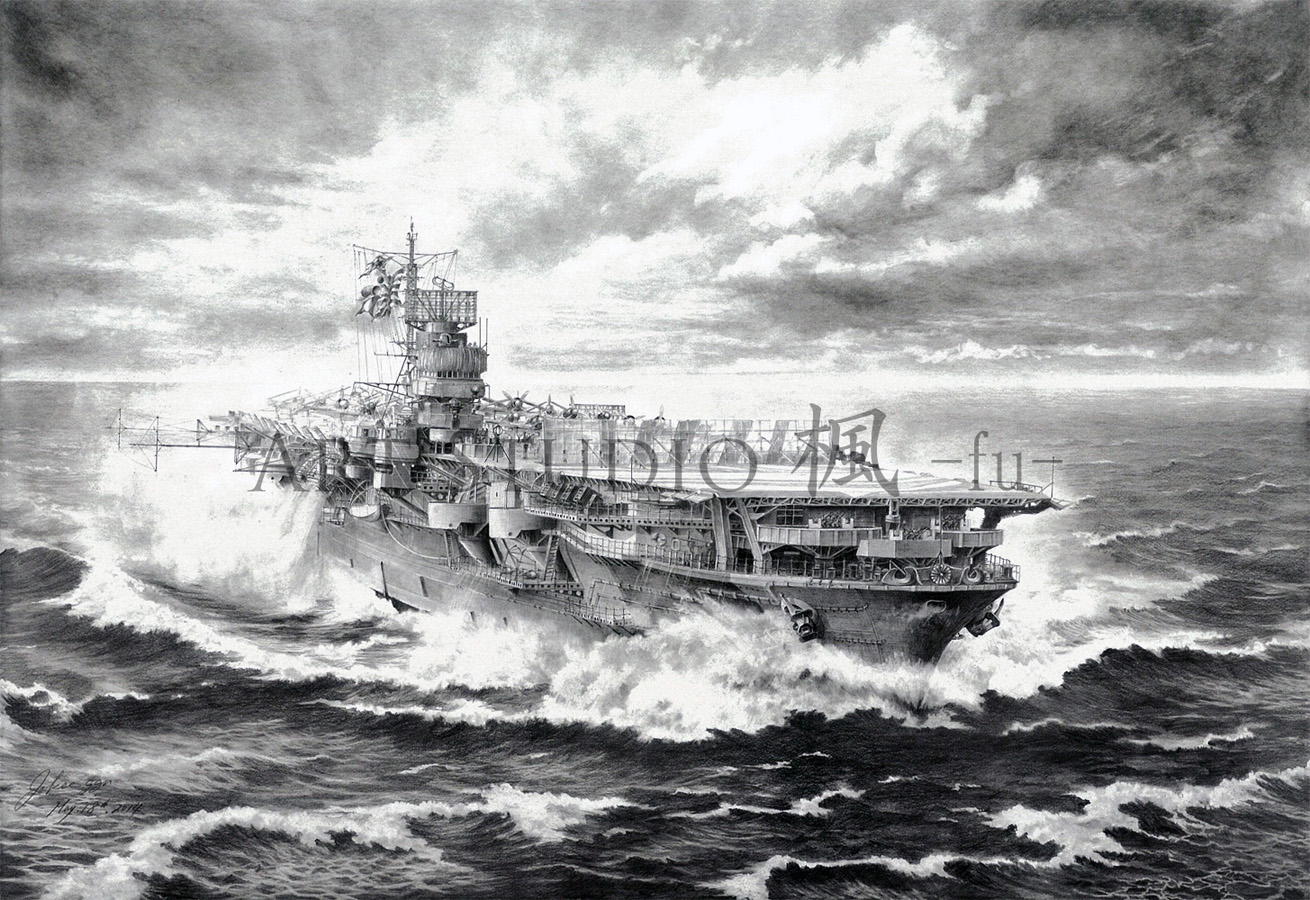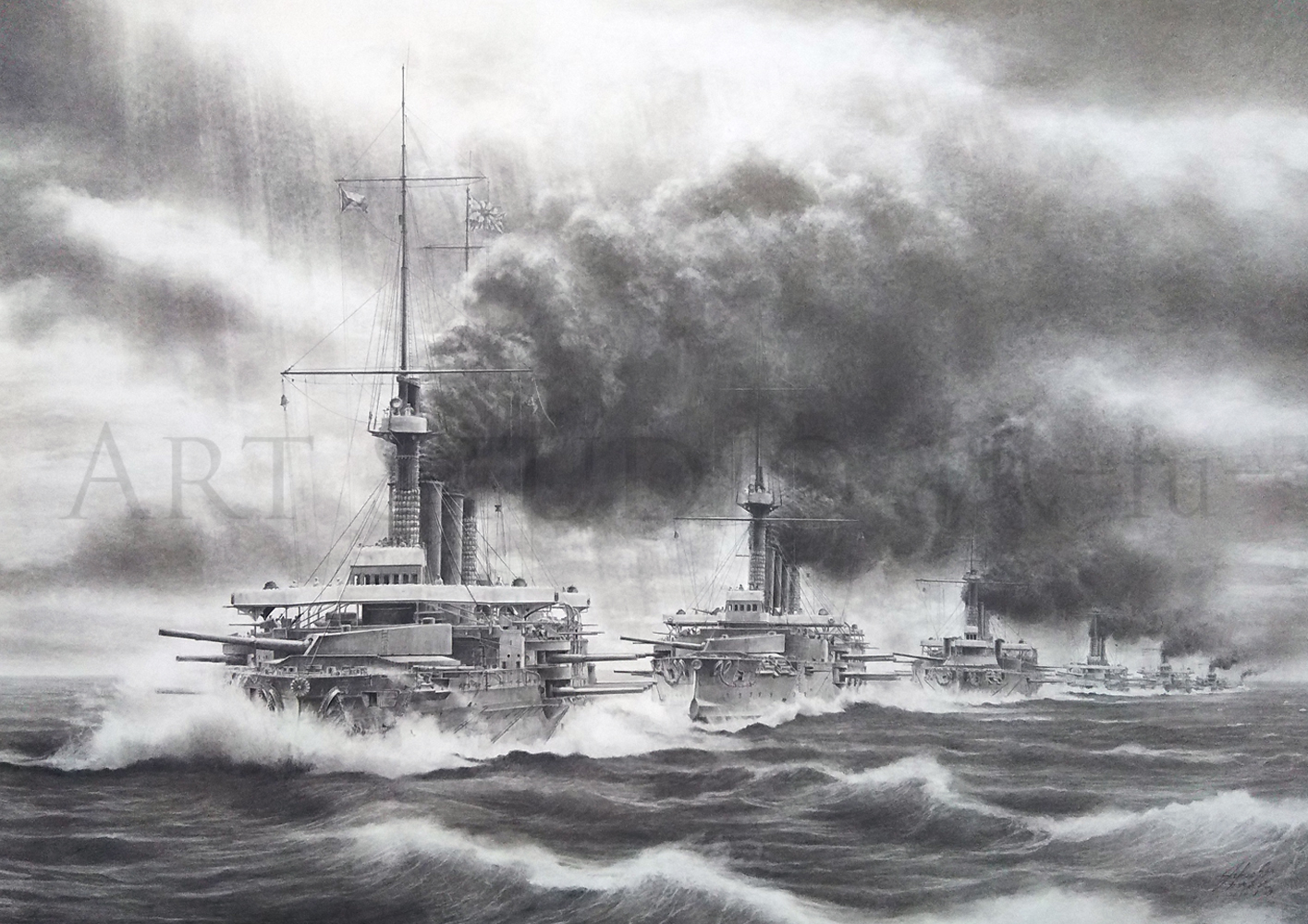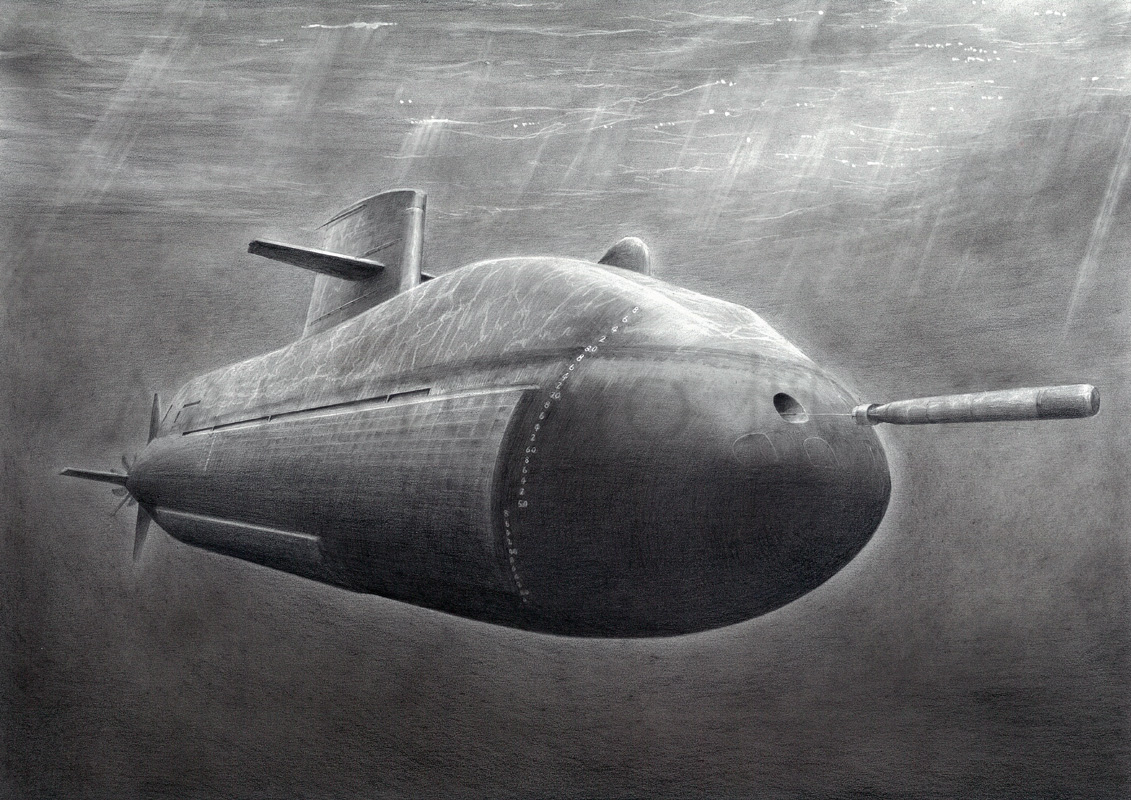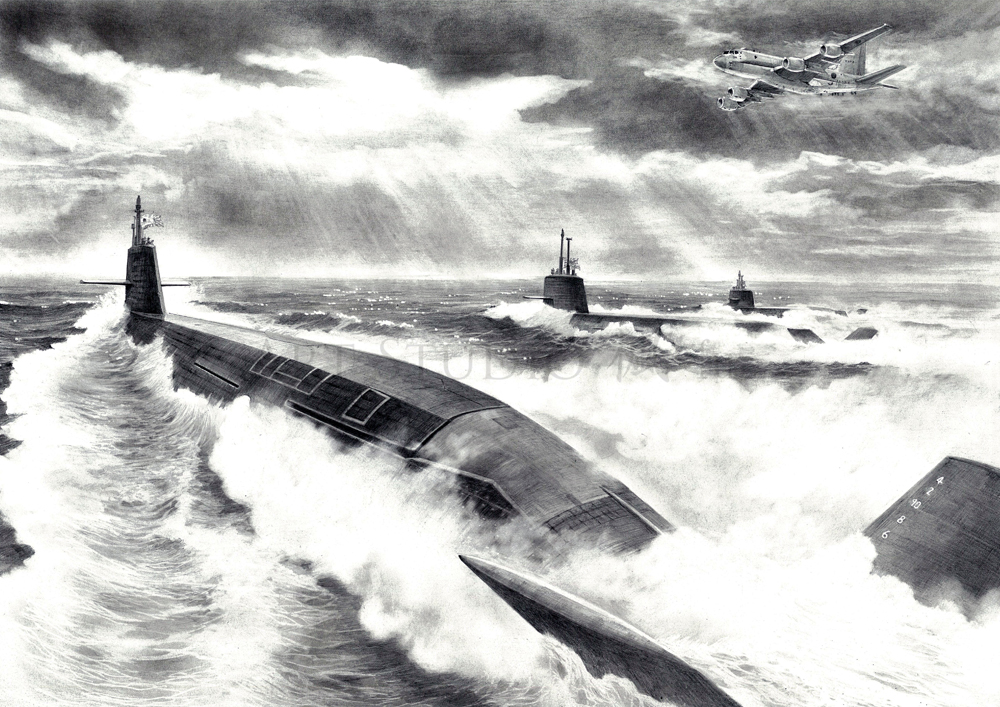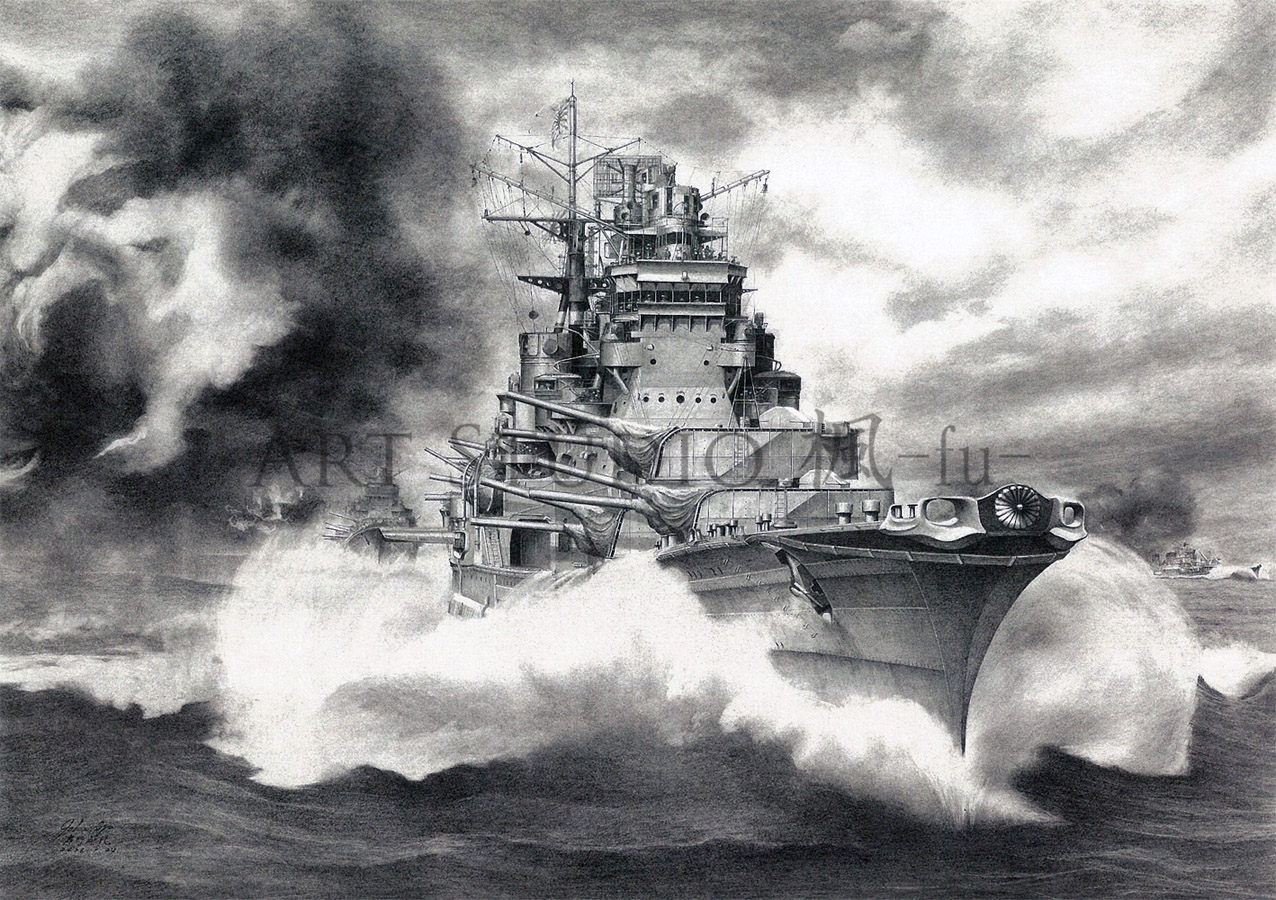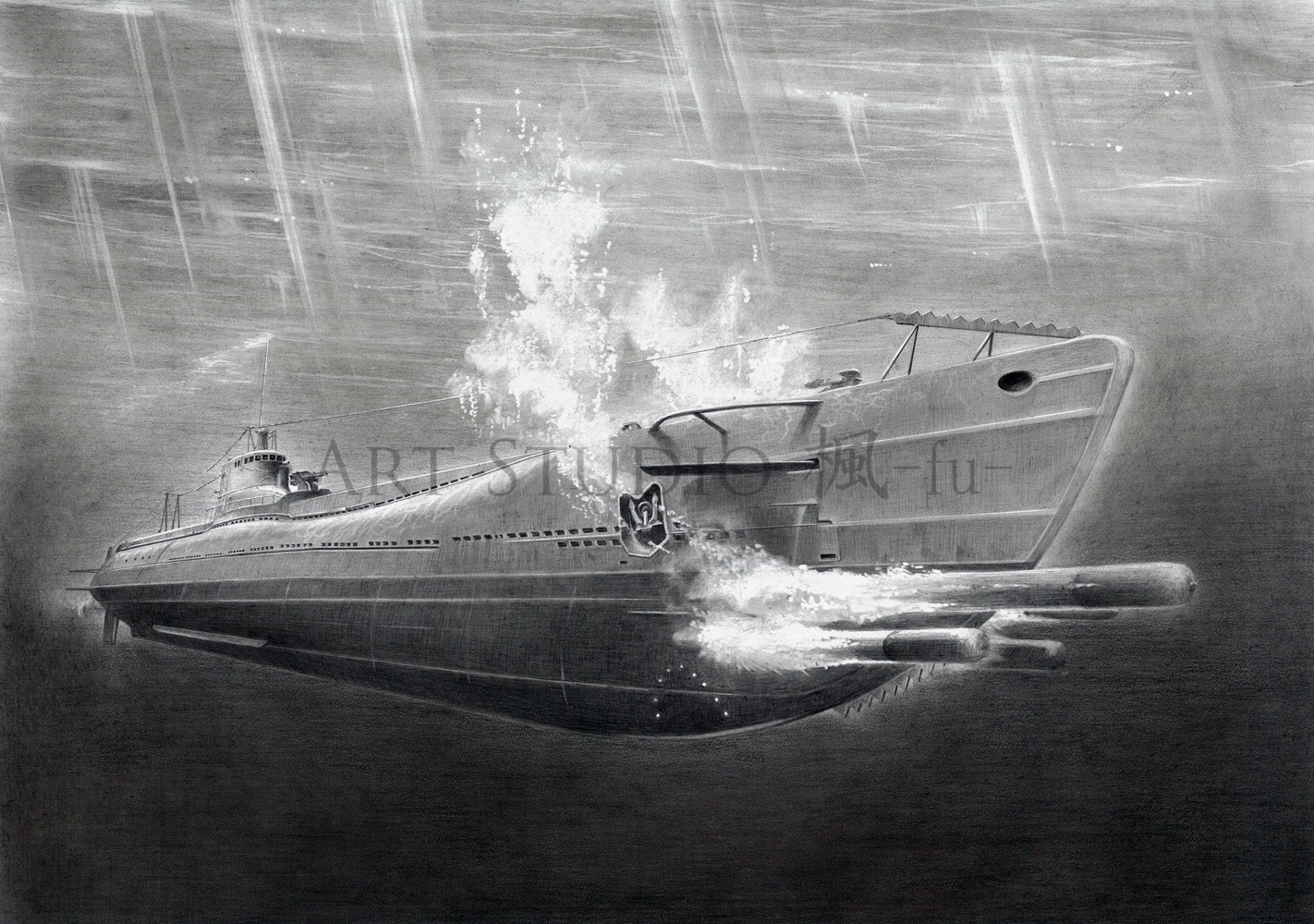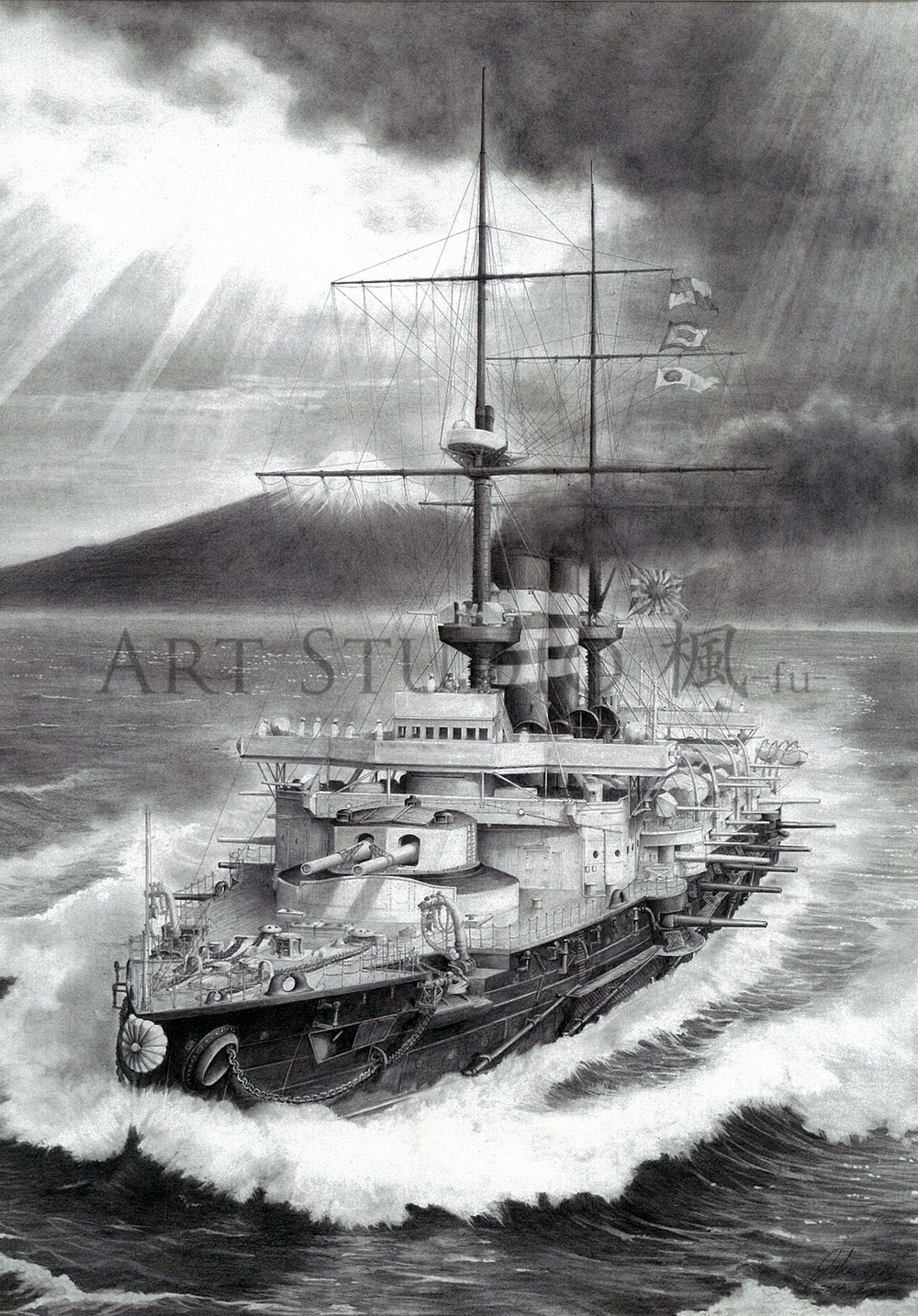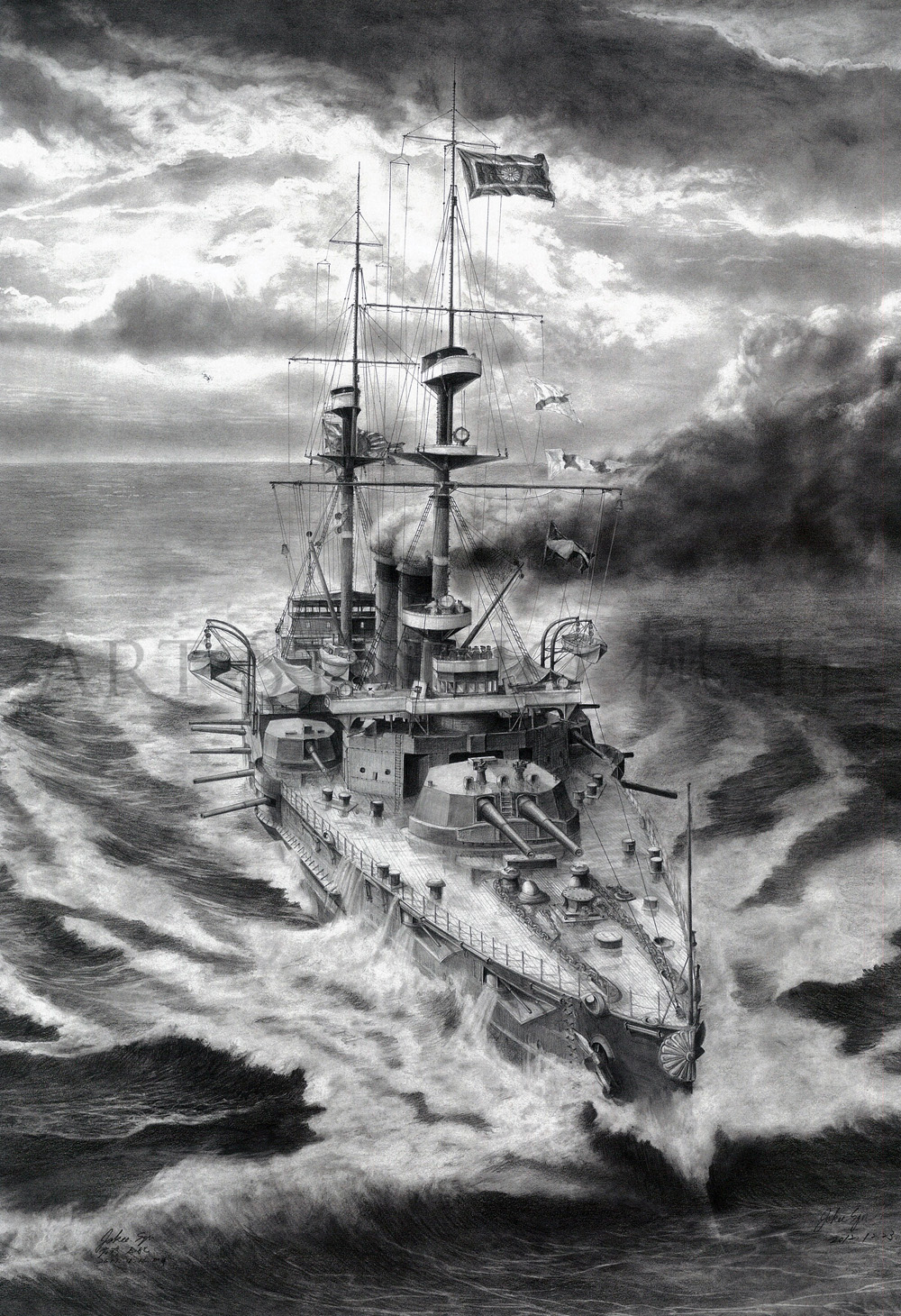祥鳳は当初給油艦として計画され、後に潜水母艦として竣工した剣埼の後身です。戦時には空母として改造できるように、あらかじめ設計されていました。祥鳳は昭和17(1942)年1月に、1年の改造期間を経て空母に改造されました。
祥鳳の初陣は、世界初の空母隊空母の戦いとなった珊瑚海海戦でした。昭和17(1942)年5月7日に始まったこの海戦で、祥鳳はその初日にアメリカ空母ヨークタウンとレキシントン機の集中攻撃を受け沈没しました。祥鳳の喪失が、帝国海軍初の空母喪失となったのです。
本作品は、珊瑚海海戦時に祥鳳に戦闘機搭乗員として乗り組んでおられた中山光雄氏と交流の深い方よりご依頼を受けて制作したものです。「航走する祥鳳から発艦する中山光雄氏操縦の96式艦上戦闘機(珊瑚海海戦時に搭乗)を盛り込んだ構図で描いて欲しい」というご要望に基づき、制作しました。コックピットに見えるパイロット(中山光雄氏)が、カメラ目線であることにもご注目下さい。ちなみに背景の随伴艦は、重巡洋艦青葉のイメージです。
Aircraft carrier HIJMS Shoho 1942 -Nakayama Mitsuo launches his plane-
The Shoho was first designed as an oiler, then completed as a submarine tender. In wartime she was converted to an aircraft carrier. This was completed in Showa 17 (1942) January, after one years of conversion she became a carrier.
Shoho’s first fight was the world’s first carrier to carrier battle, the Battle of the Coral Sea. This was on Showa 17 (1942) May 7th, on the first day Shoho was sunk by aircraft from the Yorktown and Lexington. With the loss of the Shoho, this became the first loss of a carrier by the Imperial Japanese Navy.
In this work, Nakayama Mitsuo, member of the ship’s air group, is launching his fighter during the Battle of the Coral Sea, he requested this work. He asked that he be shown just as he clears the flight deck of the steaming Shoho in his Type 96 (Claude) fighter, as if he were being photographed. The ship in the background is the heavy cruiser HIJMS Aoba.
